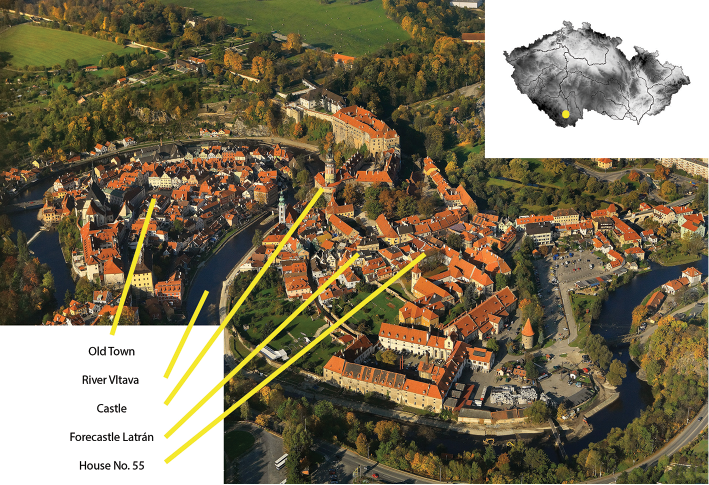
Volume V ● Issue 1/2014 ● Pages 59–77
What Did They Eat, What Did They Drink, and from What? An Interdisciplinary Window into Everyday Life of the Early Modern Burgher’s Household in Český Krumlov (Czech Republic)
Michal Preusza, Jaromír Beneša, Lenka Kovačikováa, Petr Kočárb, Jan Kaštovskýc
aLaboratory of Archaeobotany and Palaeoecology, Faculty of Science, University of South Bohemia, Branišovská 31, 370 05 České Budějovice, Czech Republic
bInstitute of Archaeology, Academy of Sciences, Letenská 4, 118 00 Prague, Czech Republic
cDepartment of Botany, Faculty of Science, University of South Bohemia, Na Zlaté stoce 1, 370 05 České Budějovice, Czech Republic
Article info
Article history:
Received: 14 March 2014
Accepted: 17 September 2014
Key words:
early modern consumers
historical archaeology
archaeology of food
archaeozoology
archaeobotanical analysis
Abstract:
The South Bohemian town of Český Krumlov, a UNESCO world heritage site, the former residence of the noble family of the Rosenbergs, is a unique mirror of the Bohemian Renaissance and Baroque. Extremely rich archives, maintained by both the town and the nobility, were for a long time the only sources providing evidence about the everyday life during the period of the town’s highest prosperity. Thanks to developing post-medieval archaeology and rescue excavation conducted in South Bohemia over the last three decades, the original collection of archive documents was substantially enriched by a wide range of archaeological resources – artefacts and ecofacts. The archaeological excavation at a filled up well at house no. 55 in the area known as Latrán was the subject of interdisciplinary interest from the very beginning. The result of the joint research has become a probe into a burgher household, the rich inventory of which demonstrates that the early modern lifestyle was established in a wide range of both dish-ware (artefacts from glass and pottery) and meals (osteological materials and plant macro remains). The answers to the questions as to what and from what the townspeople ate and drank from on the threshold of modern times reflects the origins of modern consumer society in southern Bohemia.
1. Introduction
Archaeological research in town historical cores occupies a privileged place in a varied range of topics dealt with by archaeology of the Early Modern Age in the Czech Republic (Krajíc 2007a; Smetánka, Žegklitz 1990; Žegklitz, Smetánka 1989, Žegklitz 2013). Similarly, rescue excavations in Český Krumlov provide important sources and information about the historical epoch which connects the relatively recent past with the present (Figure 1). Archaeologists of the Early Modern Age have investigated not only town spatial structures, intravilans, extravilans, fortifications and the economic background of localities, but they also seek to elucidate various aspects of daily life in this colourful, dynamic and multi-layered social and cultural environment. Research on individual town-houses, representing the most important micro-space in the organism of towns, the space necessary for the lives of the families and households of townspeople, is an important part of comprehensive investigations.
Archaeological excavation conducted in the backyard of town house no. 55 in Latrán in Český Krumlov in 1998 (Figure 2) revealed a deep well filled with early modern waste. This thus far unique discovery of a well in an urban reservation has provided exceptional insight into the early modern household in a liege town, mainly from the archaeological point of view. Český Krumlov was included onto the list of UNESCO cultural heritage due to its importance in the Early Modern Age (a residential town of the Rosenbergs, later a liege town of the Eggenbergs and Schwarzenbergs) and uniquely preserved Renaissance and Baroque sites. Efforts to assess the research results and findings from the Early Modern period have led researchers to use an interdisciplinary approach from the very beginning.
The obvious aim was to extend the historical and archaeological topics to the results from archaeozoological and archaeobotanical analyses and perform a comprehensive evaluation of an important Early Modern set of findings in Český Krumlov for the first time.
2. A brief history of the household in house no. 55 in Latrán (15th–18th century)
The first written reference to house no. 55 dates back to 1492 when a burgher Jacob (Jakub) Kukla with the permission of his wife sold the house to Linhart Húska along with three tubs and two tables. Kukla kept the rear tract of the house with a sitting-room and chamber for his family in his ownership. He reserved a stable for his use under the lumber-room as well as the rear of the malthouse under the chamber. In addition, he also kept a small gallery connecting the yard with the sitting-room and all the feeders under it. The upper hall in the rear tract of the building remained in the holding of the Kukla family, although the malthouse located directly beneath it belonged to Linhart Húska. Although the house was then shared by two households, it was still considered one residential unit (Preusz 2010, 106–107).
The malting craft was run in the front tract of the house up until 1553 when part of the house was bought by Casper (Kašpar) Libtner, a goldsmith. After his death, the house was purchased by Urban Šlechta, a chef at the castle residence.1 Urban, the cook, died in 1578 and authorized curators sold the house to Thomas (Tomáš) Deutsch, the builder. The rear of the house was in the ownership of Jacob Kukla’s family up until 1541, consequently, several owners followed: Stephen (Štěpán) Mittase, Blazek, the furrier, the maltsters Georg (Jiří) Schwarz and Georg (Jiří) Lobtascher, who owed in many pubs for beer and mugs of wine. Thomas Deutsch then also bought this part of the house in 1580 (Preusz 2010, 107–111).
Thomas Deutsch, the bricklayer, probably came from the Tyrol. He was a member of a large group of foreigners invited to Bohemia, who brought a Renaissance style of life to Central Europe. It is conceivable that Deutsch together with other builders, John (Hans) Götsch and Hans Haas, built a brewery in Český Krumlov and executed several smaller orders which earned him a decent wage. He joined the two parts of house no. 55 in Latrán in 1580 and also bought a hops-field, a garden and other lands in close vicinity to the town. After his death, his widow married a brewer Guy (Vít) Šítal. The malting craft was once again carried on, and the new owners of the house, Andrew (Ondřej) Mang, Thomas (Tomáš) and Jerome (Jeroným) Steiner were malsters. There was a brewery in the house in 1654. The Steiner family lived here up until the 18th century (Preusz 2010, 111–114).
3. Material and methods
3.1 Archaeological excavation at the yard and well
Planned reconstruction of town house no. 55 in Latrán in Český Krumlov was preceded by an excavation conducted by the Archeos Company (Beneš 1999, 16–17). The excavation was performed in the yard covering an area of 7.10×7.30 m (Figure 3). The yard was seriously disturbed by recent interventions. Removal of the concrete layer in the south-west corner of the yard revealed an elongated wooden trough (length=0.96 m, width=0.34 m), in which very clean water with an increased salt content was held in the past, implying significant human activity in its vicinity. In all probability, the trough served for feeding livestock. The surface of the lot was covered with stones, while beneath it a layer consisting of ballast was discovered. After clearing the surface, the crown of a circular well, built of dry-laid stones, appeared in the north-east corner of the yard (Figure 4). During the archaeological excavation, filling from the well to a depth of 5.40 m was removed. Subsequently, the cave expert František Krejča was invited to conduct further research at larger depths. The mouth of the well was located in close proximity to the residential building in the north-eastern corner of the yard. Considering the overlap of ca 30 cm of the well at the mining, the northern part of the well casing was located beneath the wall of the northern tract of the house. This implies that at the time the well was dug, there is little probability that a building stood on the land. It can be assumed that it was a medieval well supplying the original Gothic house with water. The well was mined to a maximum depth of 11.20 m in a direction perpendicular to the bedrock, formed by biotite paragneiss without significant traces of weathering.
The well formed a circle with a diameter of 1.2 m. Its maximum depth reached 11.20 m. The total well volume was 13 m3. The well was carved into the rock, its above-ground part was formed by dry-laid stone curbing. The lowest point of the well was a niche in the northern part, serving probably as a mud trap. The filling of the well was divided into five stratigraphic layers marked with the letters A, B, C, D, E (Figure 5). The recent layer containing concrete was marked as “A”. After its removal, the reddish clay layer “B” followed to a depth of 7 m. The archaeological material only occurred here in a limited quantity, these being fragments of pottery, glass and two coins. At a depth of 7 m, the colour of the filling changed to dark grey. The archaeological material, however, was similar as in layer “B”. This layer “C” continued to a depth of 8 m, with the findings mostly involving treated stones.
The last two layers were the richest in artefacts and osteological material. Layer “D” was noticeably lighter and the filling contained varying amounts of impurities forming, mainly at the walls, separate accumulations. This layer contained fragments of pottery, bones and Baroque glass, which dates the D layer back to the second half of the 17th/first half of the 18th century. At a depth of 8.3 m, the well walls were damaged. Stones were missing in the area of approximately 60×80 cm at the site where the timbered casing was attached to the rocky massif. To ensure security during the excavation, wooden beams were used to reinforce the timbering. The character of the filling of the bottom “E” layer was completely different from the previous layers, this layer began at a depth of 9.3 m and ended at 11.2 m. Water was hit at a depth of 9.5 m. The findings included numerous fragments of pottery (one complete vessel) and glass, fragments of leather, metals, components of wooden products and a large number of bones. The material was plentiful and the layer hardly contained any soil. The colour of the filling was dark grey-brown without major shades or tints. An analysis of the ceramics and glass dated the layer which was rich in osteological material to the first half of the 17th century.
3.2 Methods of environmental archaeology
The infill of the well has been investigated by several methods of environmental archaeology. The archaeozoological analysis was carried out at the Laboratory of Archaeobotany and Palaeoecology in České Budějovice in 2010. All the animal remains from the archaeological records were retrieved by hand during the excavation of the well. Faunal spectra were established using a Number of Identified Specimens (NISP) and a Minimum Number of Individuals (MNI). The decisive criteria for the calculation of the MNI were repetitive anatomy, lateral affiliation, bone size and the relative and absolute age of the individual. The estimation of age at death of the animals was based on the stages of tooth eruption, replacement and wear. The age at death for the cattle was estimated based on the stages of tooth eruption and replacement given by Higham (1967) and the abrasion indexes proposed by Ducos (1968). The age of the pigs was estimated from the abrasion stages of the lower jaw teeth (Grant 1982) and the replacement of teeth (Červený, Komárek, Štěrba 1999). The slaughtering age of the sheep and goats was specified following the methodology by Helmer and Vigne (2004). The degree of epiphyseal fusion in domestic animals (Silver 1969, Habermehl 1975) was registered as well. Measurements were taken following the methodology proposed by von den Driesch (1976). The withers heights for the pig, cattle and dog were estimated using calculations devised by Teichert (1966/69), Matolsci (1970) and Koudelka (1885) in von den Driesch and Boessneck (1974).
An archaeobotanical analysis was carried out in 1998 immediately after the well had been excavated. Two samples from layer E with volume 4 l (sample 1) and 5 l (sample 2) were taken by the excavators. Wet sieving with a three-piece sieve set (>2 mm, 1–2 mm and 0.4–1 mm) was conducted. Plant macro remains were gained from all of these fractions. The two small light fractions (0.4–1 and 1–2 mm) from layer 2 were only 50% sorted. The plant remains were selected and determined using a stereoscopic microscope.
The carpological archaeobotanical material obtained (seeds and plant fruits) was determined with the use of a comparative plant collection. The basic literature for plant macro remain determination was also employed (Anderberg 1991; Beijerinck 1947; Berggren 1969; 1981; Katz et al. 1965; Schermann 1967), along with literature related to particular critical plant groups (Klán 1947, Körber-Grohne 1964). The varieties of the Prunus family (plums) were determined on the basis of the comparative collection and the work of Kühn (1991). The plant taxa found at the sites were grouped based on their use and their modern phytosociological and ecological behaviour. The botanical nomenclature followed the publication by Kubát (2002).
Total of 150 ml of the sediment was taken from the trough in the yard near the well split in the water column for the diatom analysis to the individual fractions. 100 permanent diatom slides were prepared with the acid digestion method from the fraction with the largest number of diatoms (Sgro, Johansen 1995). The diatom frustules were analysed with a light microscope Olympus BX 51 under 1000× magnification. The Sladeček method was used for an evaluation of the Saprobic Index (Sládeček 1986).
4. Results and discussion
4.1 Artefacts
4.1.1 Ceramics
The largest part of the findings obtained during the archaeological field research consisted of ceramics (3,591 pieces), of which only one vessel was preserved in its entirety. Given the considerable fragmentation of the set, minimum numbers of vessels in the particular layers were calculated (Table 1).
Among the findings of ceramics, 13 types of ceramic products were identified, of which 11 forms related to cooking and dining (Table 2). Pots were the most common form used for cooking on an open fire or in the oven in the early modern perion of South Bohemia. They were placed out of the reach of flames and were exposed to radiation heating, thus “a smoke cheek” on the one side opposite the handle is characteristic for them. Pots served a single purpose, they were only used for cooking of one kind of meal. This is related to the characteristic construction of the rim, the set contained pots for cooking salty soups, solid salty dishes, intended for boiling milk and making dairy dishes or containers intended for making butter. A specialized type was also a cinder pot (a so-called “hrobcový hrnec”) which had a spherical shape for its body and a flat bottom and could be inserted directly into the fire (Štajnochr 2004, 801–851). Long rods (so-called “ohřebla”) were inserted into the pot handles, for manipulation with the pot. Given the existence of double-handled pots, several such rods had to be in the kitchen. Pots with a perforated bottom were another specific smaller functional group. They served as strainers (and could have also served as flower pots). A number of flat lids used for covering/closing the pot created a necessary supplement to the pot collection. Lids helped conserve heat when cooking or were used to protect food from possible contamination. Apart from the pots, a wide variety of bowls were used in the kitchen. Alimentary bowls were used, for example, for multiple purposes, or huge bowls with stirrup handles, the edge of which could be reinforced with a copper wire. They were in all probability used for preparation of solid meals in sauces as they were supplemented with a spout. A number of pans were used in the kitchen, primarily for quick preparation of meals, such as frying and baking. Their characteristic traits included a bottom built on three legs, so they are sometimes referred to as tripods (Dreifuβgefässe), a rod inserted into a tubular hollow handle, called “tulej”, which allowed for manipulation with the pan over an open fire. Similarly, this handle enabled manipulation with pans for baking and roasting. Oblong baking pans with a reinforced edge decorated (finger fluting) with finger decorated imprint chaining were used for roasting meat. The spouts opposite the handle or on the side served to pour out juices and sauces.
Dining in an early modern burgher’s household ranked among the important daily rituals, as reflected by the typology of dishes used at the burgher’s table. A Renaissance sitting-room was equipped with a stove and glazed windows (Figure 6). Diners had to first wash their hands in a richly decorated ceramic basin (Figure 7). The basin was decorated with religious motifs (the crucifixion of Jesus Christ, the Virgin Mary, the Infant Jesus with the imperial apple, John the Evangelist) fixed on it (Preusz 2013, 292–297). Only then was food served on plates and in bowls (Figure 8). Plates with a horizontal edge represented an absolute novelty on the burghers’ table associated with the individualization of dining. Bowls still, however, maintained their place on the table, although they grew smaller and increasingly resembled plates. Their main advantage was a pulled up edge, which served for wiping off of spoons. Thus we can assume that the bowls were mainly used for serving liquid meals and sauces and the plates for serving solid food (Štajnochr 2006, 964–96). To keep and serve food continuously warm, dish-warmers were placed under the plates.
Wine and beer were drunk from oval or spherical jugs with a characteristic cylindrical neck, which was tectonically separated from the jug body with a stuck tape. These necks were topped with a pulled up, often cut out rim, which allowed a drinker to comfortably pour the liquid into his mouth. The jugs were supplemented with a sub-seated handle with an upper root in the neck, which allowed a drinker exact handling with a vessel when pouring a drink out by a radial swing around the centre of the gravity of the jug, saving thus the bibber’s scruff of the neck (Štajnochr 2005, 729). Another typical feature of early modern jugs was a base, which enabled potters to grip the container when a vessel was coated with glaze on both sides. Two-sided yellow, green or brown glaze is a typical decoration of jugs, thereby differentiating them from other tableware. Their decoration also included various shallow grooves, spirals and stuck ornaments. These smaller jugs (ca 0.3 to 0.5 litres) for wine were poured from large 2 litres jugs with a spout. In addition, water was brought to the table in cooling jugs. These containers were characterized by a bulbous body, a huge handle and a narrow neck keeping liquids cold longer (Štajnochr 2005, 746–749).
4.1.2 Glass
Compared to finds of ceramics, glass shreds formed only a small part of the assemblage (1% from the total number of fragments), including hollow and sheet glass (Table 3), i.e. tableware glass (for beverages), packing glass (pharmaceutical) and special functions (lighting). The first category includes cups and goblets, the second group four-sided tiny bottles and the last category comprised of a glass hanging lamp. A separate group consists of sheet glass, which includes fragments of window discs and fractions of triangular or trapezoidal slabs which could have served as a filling for the inter-ring/annulus or for other purposes (Figure 9).
In layer D, fragments of small goblets with inward pushed up bottoms were discovered. There were, additionally, pieces of a cylindrical humpen glass made of colourless transparent glass with a circular base coiled with a strong fibre. These glasses followed an older tradition of welcoming goblets (so-called “vilkums” from German “Willkomen”) with a hollow cylindrical or tapered stem. Apart from the humpen glass, this layer contained fragments of three goblets made of crystal glass, two of which were decorated with fluting or floral decoration, using the technique of grinding and cutting. These techniques were commonly used in glass-works around Český Krumlov after 1674 (Mareš 1893, 116). This allows for dating the aforementioned glass artefacts back to the late 17th and early 18th centuries.
The E layer, in contrast, takes us deeper into the past, i.e. the Renaissance period from the late 16th to the first half of the 17th century (Krajíc 2007b, 69–74). Several types of four-sided little bottles were discovered which would have been used in the 16th and 17th centuries for preparation or storage of liquids. In the case of the Český Krumlov household, these bottles could have been used for distribution of healing water from the spa below the Rosenberg glass-works in Vilémov (Fröhlich 1994, 3). However, the finds of glasses for drinking, goblets and cups prevailed. A cup with a semi-oval body, adorned with a diamond-tipped engraving, a luxurious technique which began to appear in Bohemian glass-works with the arrival of Caspar Lehmann, a glass and precious stones engraver, to the court of Emperor Rudolf II in Prague in 1582, undoubtedly ranked among the luxury goods (Drahotová 1970, 24). Other cups decorated with optical ribs and balustrated stems clearly show the influence of Venetian glass on domestic production (Drahotová 1985, 36). Glassware for drinking included a goblet of a deep purple colour due to a significant admixture of manganese into the glass. It was made by a mould casting technique, which allowed for decoration of its surface with drop-shaped projections. A welcoming cup decorated with coats of arms was one of the most beautiful things in the household. The glass jacket was splendidly decorated with red and yellow enamels showing two coats of arms. Since only fragments of the cup survived, it was not possible to proceed to more specific identification of the coats of arms and their owners.
4.1.3 Other findings from leather, metal and wood
Stratigraphic layer E contained 35 leather fragments (Figure 10). These were probably shoe components, since most of them were punched with awls or decorated by cutting the edges. Unfortunately, the poor condition of most of the fragments preserved made it extremely difficult, even when using the stitch analysis, to match the preserved parts of the shoes. The minimal quantity of shoes was determined by assessing the shoe toes or their parts and soles. Eight types of shoes were assessed. They were simple leather leash-tied boots reaching a maximum height of the ankles. Shoemakers obtained cow leather exclusively from workshops of Český Krumlov tanners (Gross 1900–1901, 313).
The wet environment of the well was favourable for preservation of wooden artefacts (Figure 11). During the excavation, branches and rods, not further documented in detail, were collected from the well. The analysed artefacts included the following identified objects: a fraction of a balance beam, which served to draw water from the well; two wooden buckets, the boards were tightened with iron or wooden loops; washing mallets for beating the dirt out of clothes or maintaining storage containers for wine, beer or other liquids which the house with a malt house presumably had; a shovel used for work with lighter bulk material; and finally, a peg the function of which is not quite clear, presumably it could have been used for hanging clothes and hides. Strips of wood chipped from the branches for tightening buckets (wooden loops) were preserved in poor condition as well as some unidentified fragments which could have been part of some construction.
The excavation has brought to light a few items with metal components, namely a wooden bucket with iron hoops, a balance beam with a fraction of the hinge and leather shoes with heels with metal studs. The brass spoon was the only metal artefact found in the well (Figure 12). Similar direct evidence of changes in the material culture of dining in the first half of the 17th century is still scarce in archaeological findings. An analogous find was made in Český Krumlov during the cleaning of the Vltava River.
Three coins were also obtained from younger fillings in the well, one of which could not be further identified. Two coins were preserved in a very good state contributing markedly to a more exact dating of the individual stratigraphic layers and material obtained (Figure 13). The coins, exclusively domestic currency of low denomination and small size, were coined in the territory of Bohemia. In the “B“ layer at a depth of 3 m, one copper Kreutzer (Maria Theresa) coined in Prague in 1762 was found. The following find was in the “D“ layer at a depth of 8.5 m, it being a 1 silver Kreutzer with Leopold I. Habsburg from 1700.
4.2 Environmental analysis
4.2.1 Archaeozoology
A detailed archaeozoological analysis investigated 310 animal bones, teeth, and their fragments, namely 42 bones from the D layer and 268 from the E layer. 11 bones in the set (3.5%), i.e. 1 fragment from the D layer and 10 fragments from the E layer, have remained unidentified. The vast majority of the findings could be matched to one of 11 species (81.9% of the total findings), or at least to the auxiliary determination category (14.5% of the total findings). MNI in the D layer was at a minimum of 8 individuals. The E layer contained 31 individuals including mammals, birds and fish (Table 4). As the studied sample contained bone and teeth fragments of cattle (Bos taurus), red deer (Cervus elaphus), pig (Sus domesticus), sheep (Ovis aries), goat (Capra hircus), dog (Canis familiaris), cat (Felis catus), hare (Lepus europaeus), domestic goose (Anser domesticus), domestic fowl (Gallus domesticus) or carp (Cyprinus carpio), undetermined broken bone fragments were split among large or medium-sized mammals. Although the file only had a modest number of bones of caprines, only a few of them could be morphologically differentiated. The minimal number of goats in the studied sample did not differ from that of sheep. Considering the individual discovered bones, the sheep bones predominated in both the layers (Figure 14).
The remains of domestic mammals prevailed in the file (98.4% of the total NISP). In the more numerous E layer, the bones of domesticated mammals and poultry formed 86.8% and 11.5% of the NISP, respectively. The bones of wild mammals (1.3%) and fish (0.4%) were determined to a much lesser extent (Table 5). Only the remains of domestic mammals were included in the D layer. The remains of red deer and hare were present out of wild animals. The right metatarsal bone and incomplete tibia of the hind leg of an adult were preserved from a deer skeleton. An adult hare is represented by a complete left tibia and fibula of the hind leg. Based on the modest finds of wild fauna, we can state that hunting fell far below the importance of livestock breeding and represented a marginal and probably only exceptional component of the diet of the population in the studied location. The finds from the well filling are not only an example of the spectrum of animal species, evidence of their use and consumption, but also reveal the way of animal waste dumping, not only in the form of butcher waste and kitchen garbage, but perhaps also the corpses of dead young animals – mainly small carnivores (dogs and cats).
Among the pig remains discovered in the E layer (44.3% of NISP), the teeth of males predominated; no female was determined. The death age of the majority of the pigs ranged from 5 weeks, which probably included animals which died of natural causes, up to 2 years of age. According to the dental record, half of the individuals were slaughtered between 18th to 24th months of age. The remaining individuals were younger. Sporadic find of the femur of a 3.5-year-old pig (Gl=213.8 mm) belonged to an individual 78 cm high at the withers. Certain postcranial bones suggest that in addition to young pigs, the assemblage also contained the remains of older pigs. In layer D, where 14.8% of the pig remains were determined, more than half of the jaw of a seven-week-old piglet was discovered.
A total of 25.5% of NISP have been assigned to cattle for the E layer and 29.6% for the D layer. The cattle slaughtering age was different, it reflected two age groups. One of them involved calves of 1–9 months of age, the other included individuals older than 8 years. Calves died either shortly after birth or during a period when they stopped accepting milk from the cows. Some of the bones carried traces of cutting (e.g. the metatarsal bone or femur), which suggests that these animals were slaughtered for meat. The other group was comprised of cattle, which could be of a long-term economic significance and could be used for reproduction, milk or work. Based on the dimensions of one metatarsal (Gl=206.5 mm) and two metacarpal bones (Gl=181.6 mm; 182 mm), the set contained three females 109–110.1 cm high at the withers. The size of all the cows was not all that different, suggesting a relatively uniform group of cattle. Two pathological changes in the bones of the adult cattle from the E layer were observed. Inflammation of the dental beds in the last premolar and first molar in the right lower jaw can be interpreted as weakening of the animal’s health condition. The trauma was manifested as deformed proximal epiphysis in phalanx II. The question remains whether this animal was excessively used for draught or work.
The proportion of sheep and goats remains in the layer D was 22.2% and 4.7% in layer E. Sheep/goat did not live to a prolonged age either. While the youngest animal in the E layer was 6 months old, the oldest was 4 years of age. A more detailed study of the use of farm ruminants was not conducted due to the small amount of data on the slaughtering age of these animals The records were supplemented by findings from the D layer, where the find of a mandible inferred sheep 6 to 8 years of age and another jaw of a goat or sheep belonged to an individual slaughtered between 2 to 6 years of age. The higher age of the sheep could be associated with their exploitation for wool and milk.
The assemblage also contained the bones of dogs and several cats (33.3% of NISP in layer D and 21.6% in layer E). The age specification of the animals which commonly lived close to dwellings was carried out based on certain epiphyses of long bones. Although some bones were fully ossified, the animals were not all that old. A still visible line between the joint and shaft of the femur and the humerus of two cats from layer E pointed to individuals at least 11.5 months old. Two individuals from layer D were younger than 11.5 months. The bones of three dogs belonged to one dog older than 18 months, 31.2 cm high at the withers and two puppies that died before reaching three months of age (one was younger than the other).
In the analysed set, 51 (16.5%) of the studied bones of the mammals exhibited butchering marks reflecting manipulation with the animal carcass. Reconstruction of the location and orientation of the cut marks on the carcasses of the cattle and pigs subsequently enabled a specification of the methods butchers used in portioning the meat (Figure 15). We assume that other parts of the livestock were in all likelihood used, e.g. the intestines, blood, hide. Cutting off the goat’s right horn from the frontal bone and the oblique notches (at least 15) at the bottom of the horn could have been caused, for example, when removing the horn sheath. Cuts were also detected in the bones of a goose. In this case, transverse and oblique notches were recorded at the proximal end of the carpometacarpus and the distal epiphysis of the tarsometarsus in the E layer. Unlike the geese, the bones of the domestic fowls did not have any cuts. Butchering signs were also observed in certain bones from layer D, e.g. a short oblique cut in the upper third of the diaphysis of the femur of a young cattle, cut off and transverse notches below the proximal epiphysis of the humerus of a young cattle or a transverse cut on the lumbar vertebrae of the same taxon.
4.2.2. Archaeobotany
A set of 10,034 pcs of plant macroremains (mainly plant seeds and fruits but also needles) were analysed. The largest group of macroremains of grassland species (49.6%) was followed by the macro remains of weeds of cereals (26.5%), forest species (8.1%), grown and wild-collected crops (7.9%). Local ruderal species accounted for 6.4% and other groups of plants 1.5% (Table 6).
The assembling contained the following species of regularly mowed mesophile meadows: Ranunculus acer, Ranunculus auricomus, Knaucia arvensis, Rumex acetosa, Leucanthemum vulgare agg., Valeriana officinalis agg., Lychnis flos cuculi, Alchemilla sp., Anthriscus sp., Galium verum, Pastinaca sativa, Cichorium intybus, Silene vulgaris, Hypericum perforatum, Trifolium pratense, Hieracium murorum, Trifolium montanum, Rhinantus sp., Hieracium sp., Plantago lanceolata, Myosotis sp., Poaceae (Graminae).
Species of drier pastures were no less abundant: Ajuga reptans, Asperula cynanchica, Echium vulgare, Calamintha acinos, Calamintha clinopodium, Teucrium cf. botrys, Carex caryophyllea, Carex echinata, Carex muricata, Carex pilulifera/C. ericetorum, Cerastium sp. (excl. C. arvense), Dianthus deltoides, Hypochaeris radicata, Leontodon sp., Linum catharticum, Luzula campestris/L. multiflora, Potentilla erecta, Potentilla spp., Prunella vulgaris, Rumex crispus, Rumex sece. Rumex, Taraxacum officinale agg., Trifolium repens, Viola canina agg.
The species of wet meadows were the third abundant group although not numerous in terms of the number of species (harvested for bedding): Eleocharis sp., Isolepis setacea, Symphytum officinalis, Scirpus silvaticus, Ranunculus flammula, Stellaria graminea, Carex flava/flacca, Carex nigra, Carex ssp., Ranunculus repens.
In the group of weeds, the species of poorer acid soils of central and higher altitudes prevailed: Vicia tetrasperma, Scleranthus annuus, Mentha arvensis, Viola arvensis, Raphanus raphanistrum, Anagallis arvensis, Aphanes arvensis, Rumex acetosella agg., Cerastium arvense, Lapsana communis, Spergula arvensis subsp. avensis, Centaurea cyanus, Agrostemma githago, Cirsium arvense, Galeopsis tetrahit/G. bifida/G. pubescens, Trifolium campestre/T. dubium.
In addition, thermophilic species of weeds were also recorded (Bupleurum rotundifolium, Vaccaria pyramidata, Valerianella rimosa, Galium spurium, Neslia paniculata, Papaver rhoeas, Setaria glauca, Valerianella dentata, Sinapis arvensis), for some of them (namely Bupleurum rotundifolium, Vaccaria pyramidata, Valerianella rimosa) the surroundings of Český Krumlov do not represent favourable sites.
Weeds of loosened substrates were represented to a lower extent. These species indicate cultures of ruderal species and root crops: Chenopodium album, Amarantus sp., Melandrium album, Melilotus albus/M. officinalis, Trifolium hybridum, Stellaria media, Fallopia convolvulus, Aethusa cynapium s. l., Brassica campestris, Euphorbia helioscopia, Polygonum persicaria, Thlaspi arvense.
The only representative indicating weed communities of flax is Cuscuta europea/C. epilinum.
There is low evidence for local ruderal species. Apart from the above-mentioned species of loosened substrates, the following species of muck-heaps and other by nutrients heavily subsidized positions can also be mentioned: Atriplex sp., Urtica urens, Verbena officinalis, Chenopodium ficifolium, Chenopodium polyspermum, Anthemis arvensis, Potentilla supina, Polygonum lapatifolium agg., Polygonum hydropiper, species of roads and public areas compacted by trampling were: Arenaria serpylifolia, Polygonum aviculare agg., Portulaca oleracea subsp. oleracea, and Carex leporina.
Nitrophilous species of road verges and discharge troughs were also recorded, although infrequently: Galium aparine, Saponaria officinalis, and Urtica dioica.
Forest species were represented especially by a mass finding of needles of fir (Abies alba) and spruce (Picea abies) and sporadic birch seeds (Betula pendula). Other forest species (e.g. Melandrium rubrum) occurred only exceptionally.
The collection of utility species comprised 21 taxa. Four types of grown fruit trees were identified: plum tree (Prunus domestica subsp. oeconomica var. prunealiana), apple tree (Malus domestica), walnut tree (Juglans regia), cherry or sour cherry (Cerasus avium / C. vulgaris).
The set of collected species consisted of five commonly documented ones: blackthorn (Prunus spinosa), blackberry (Rubus fruticosus agg.), hazel (Corylus avellana), raspberry (Rubus idaeus) and strawberry (Fragaria vesca/F. viridis).
Two types of vegetables were also identified, i.e. pumpkin (Cucurbita pepo) and cabbage (Brassica oleracea). Field crops were represented by four types of cereals: oats (Avena sativa), buckwheat (Fagopyrum esculentum), rye (Secale cereale), millet (Panicum miliaceum), and three species of oil crops: poppy (Papaver somniferum), hemp (Cannabis sativa), and flax (Linum usitatissimum).
A group of potential medicinal drugs and spices is represented by elderberry (Sambucus nigra), juniper (Juniperus communis), and hop (Humulus lupulus).
Finding of common pumpkin (Cucurbita pepo), a crop native to Mexico and adjacent parts of the United States, is one of the rare evidence for the introduction of new plants from the New World to Bohemia in the early modern period.
The set, based on its archaeobotanical composition, is not typical for sediments of wells or sumps (it contains only small amounts of the macro-remains of utility species, including species indicative of faeces). In contrast, a high concentration of plant residues of species of regularly mowed meadows and bedding meadows and pastures is characteristic namely for bedding, manure, feeding (hay) for livestock and is usually found on dunghills or in stables. Late medieval and early modern dung samples are characterised by higher concentrations of spruce and fir needles indicating an archaic practice of obtaining bedding for cattle by scratching litter in forest stands.
Fruit species, both collected and cultivated, predominate in the relatively small file of utility species. For the modern period, findings of pairs of species are typical – plum (more widely introduced in south-west Bohemia from ca the 18th century) and pumpkin.
Weedy species mostly correspond to the local pedological conditions of the poorer and acidic substrates of south-west Bohemia (grown crops were probably mainly from local sources), but finds of green gold (Bupleurum rotundifolium), cow cocle (Vaccaria pyramidata), lamb’s lettuce (Valerianella rimosa), and perhaps some other thermophilic species, such as purslane (Protulaca oleraceae) indicate in all probability a partly allochthonous origin for agricultural commodities (grains or feed for livestock from warmer areas such as the Danube region, Central Bohemia and South Moravia). Weed species, at uncharacteristically high concentrations for well fillings, probably relate to feeding the tailings to cattle (by-products of field crop processing). In addition, several identified species of local ruderal vegetation indicate the environment of dung water streamlets.
4.2.3. Diatom analysis of water in a wooden trough in the yard
The number of found species is, considering the size of the wooden trough, surprising (Table 7). This is probably due to the fact that wood is a suitable substrate for diatom colonization. Live species determined in samples, Navicula sp. and green alga Microspora sp., were eliminated from the ecological evaluation as these are recent native species without any relation to the investigated issue. The total value of the Saprobic Index of the obtained species spectrum (0.6) indicates oligotrophic, very clear water, without visible traces of organic contamination. Many of the species found are very strict inhabitants of oligotrophic waters, for example, mountain streams (Eunotia bilunaris, Fragillaria virescens, Hanaea arcus). Nitzchia commutata usually occurs in waters with an enhanced salt content, an accompanying feature of human activity in the vicinity of a water reservoir. This higher level of salt did not apparently have, however, the character of an eutrophic agent, and was not therefore accompanied by any other organic substances and classical pollution did not occur, see the low Saprobic Index. The remaining species do not exhibit any more significant environmental activities.
5. Discussion on meals, beverages and interdisciplinarity
Interdisciplinary research including history, archaeology, archaeozoology and archaeobotany pointed to completely different aspects of the individual research disciplines. The individual disciplines provide quite different evidence for eating and drinking customs providing thus a more complete view.
The comparison of archaeological and archive resources suggests (Table 8) that the written sources contain exclusively records about artefacts of a higher value. This is due to the nature of the documents referring to the artefacts (wills, purchase contracts), which were written up due to the transfer and sale of property. Only metal bowls may be mentioned here in relation to kitchen equipment. In contrast, archaeology has brought to light a wide range of specific finds of ceramics, glass, wood, hides and metal which are not referred to in the written sources. They enable a quite accurate reconstruction of middle class kitchenware and tableware, as dining was one of the most important everyday rituals in town households. Finance is the only feature which appeared in both types of sources, it must be considered as one of the most important parts of the daily life of early modern burghers and at the same time an important prerequisite for buying groceries.
Another comparison of results provided by history, archaeobotany and archaeozoology confirms that livestock was reared in the house’s backyard. Animal husbandry ranked among the basic urban economic activities in the Early Modern Era. This was also documented by plant species in the well backfills primarily indicating midden, faeces and feed for cattle and written sources which mentioned feeders in the backyard in 1492 and the breeding of two heifers and two pigs in 1654. The absence of sheep is probably connected with the concentration of sheep breeding not in towns but in manor sheepfolds (Čapek, Preusz 2012, 13–20). The differences in taxonomic distribution were also confirmed by the archaeozoological analysis, which recorded bones of pigs, cattle, sheep or goats (44.3%, 25.5%, and 4.7%, respectively). Archaeozoological research of home bred animals also monitors the age at death of pigs and cattle. Most of the animals died at an early life, which was caused by killing of young individuals for meat. In contrast, middle-aged animals were practically missing, this may be related to observing the guild regulations of Český Krumlov butchers from 1539, stating: “those, who by themselves at home would breed small cattle, keeping workers or having a wedding feast, or buy it, shall be allowed to slaughter it and consume it but not to sell the meat out of their house. However, if so much should remain them that it might get spoiled, then they may dispose of it to anyone they like” (Gross 1900–1901, 201). Thus the bones of the older individuals are only found sporadically, cattle, goats and sheep were probably primarily used for milk production.
A modest finding of a carp rib underlines the popularity of tasty fish meat among South Bohemia’s burghers. The countryside of South Bohemia did not lack for carp meat due to an extensive pond system built here in the 16th century (Pánek 1998). The Rosenberg dominion, where the acknowledged pond cultivators Štěpánek Netolický and Jakub Krčín from Jelčany worked, sufficiently supplied Český Krumlov’s fish market. Fish meat would undoubtedly replace forbidden meat, such as beef, pork or venison on fast days.
Hunting was, in contrast, a privileged and exciting entertainment primarily for the aristocrats who during hunting expeditions showed off not only their abilities, but also their horses, hunting dogs and impressive weapons. They organised hunts both in forests and game reserves (Hajná, Pavelec, Vaverková 2011, 47–48). While the nobility ensured sufficient boars, deer, roebucks, fallow deer and hares for their dining tables through various mass hunts, the burgher table remained much more modest. The hunted game represented more of a marginal supplement to the burgher diet. One of the residents from the house in Latrán could afford venison or taste a hare only occasionally.
The burgher diet in this period was represented by several common plant taxa, e.g. plum (Prunus domestica subsp. oeconomica var. prunealiana), apple (Malus domestica), walnut tree (Juglans regia), cherry or sour cherry (Cerasus avium/C. vulgaris), blackthorn (Prunus spinosa), blackberry (Rubus fruticosus agg.), hazel (Corylus avellana), raspberry (Rubus idaeus) and strawberry (Fragaria vesca/F. viridis), cabbage (Brassica oleracea), oats (Avena sativa), buckwheat (Fagopyrum esculentum), rye (Secale cereale), millet (Panicum miliaceum), poppy (Papaver somniferum), hemp (Cannabis sativa), and flax (Linum usitatissimum), elderberry (Sambucus nigra), juniper (Juniperus communis), hop (Humulus lupulus) and pumpkin (Cucurbita pepo).
Pumpkin (Cucurbita pepo) was also detected in early modern Prague in a hospital sump filling on Kanovnická Street (Čulíková 2008, 234), Thunovská Street in the Lesser Town (Čulíková – unpublished data), sumps on Peterská Street (Opravil 1978) and the Republic Square (Kočár – unpublished data). The species was also found in Prague – Chodov in unspecified sediments from an early modern fortress (Holý 1973). Outside Prague, the species was only reported from a sump at the Brethren Church in Ivančice (Opravil 1985) and recently from Český Krumlov. The finding of a larger pumpkin cultivar (Cucurbita maxima) was also reported at a sump on Karmelitská Street in the Lesser Town (Kočár et al. 2007, 387). Pumpkin is thus the only more abundantly repeatedly documented American species recorded in Bohemia in early modern archaeological situations. Its link to Prague and Prague’s surroundings is also noteworthy.
The study of distribution of food materials and dish-ware and the preparation of particular meals known from old cookery books might in the future bring interesting additional information.
6. Conclusion
The present study is a microprobe into a wide issue of the relationship of burghers to meals in the Early Modern Era. We are still at the beginning of the research into objects where food-related crafts where run, but it is clear that modern society began with rational calculations and a split into groups of manufacturers and consumers. So-called time capsules, to which backfills of wells and sumps belong, represent a unique opportunity to explore groups of consumers. In the case of house nr. 55 in Latrán in Český Krumlov archaeological rescue excavation has encouraged interest in comparative analyses of artefacts, ecofacts and also awakened interest in a detailed analysis of written sources which relate to the life of burgher households in the selected house.
Food and drink in burgher households in south Bohemia became a key topic of this interdisciplinary study. Possible starting points for research, further developments and trends were indicated from different aspects. Archaeology provided an analysis of the kitchenware and tableware, archaeozoology brought information on livestock breeding and use, archaeobotany on cultivated plants, history on the burghers’ social status and life in their households. Together they represent a unique insight into the everyday life of burgher households.
Acknowledgements
This article was supported by the OPVK project PAPAVER – Centre for human and plant studies in Europe and Northern Africa in the post-glacial period, registration no. CZ.1.07/2.3.00/20.0289 and by the research grant of the Grant Agency of the University of South Bohemia – GAJU no. 116/2013/P.
References
ANDERBERG, A. L. 1991: Atlas of seeds and small fruits of Northwest-Europaean plant species with morphological descriptions. Part 4 – Resedaceae – Umbelliferae. Stockholm.
BEIJERINCK, W. 1947: Zadenatlas der Nederlandsche Flora ten behoeve ean de Botanie, Paleontologie, Bodemcultuur en Warenkennis. H. Veenman and Zonen. Wageningen.
BENEŠ, J. 1999: Český Krumlov, měšťanský dům na latránu č. 55. Výzkum dvorku a studny. Zprávy České archeologické společnosti, 16–17.
BERGGREN, G. 1969: Atlas of seeds and small fruits of Northwest-Europaean plant species with morphological descriptions. Part 2 – Cyperaceae. Stockholm.
BERGGREN, G. 1981: Atlas of seeds and small fruits of Northwest-Europaean plant species with morphological descriptions. Part 3 – Salicaceae – Cruciferae. Stockholm.
ČAPEK, L., PREUSZ, M. 2012: Chov ovcí, ovčíny a sociální struktura ovčího řemesla ve středověku a raném novověku v Čechách a na Moravě (Sheep fading, sheepofolds and social structure of sheep husbandry in the middle ages and early modern period in Bohemia and Moravia). Kuděj 2, 6–35.
ČERVENÝ, Č., KOMÁREK, V., ŠTĚRBA, O. 1999: Koldův atlas veterinární anatomie. Praha.
DRAHOTOVÁ, O. 1970: České sklo. Praha.
DRAHOTOVÁ, O. 1985: Evropské sklo. Praha.
DUCOS, P. 1968: Les origines des animaux domestiques en Palestine. Bordeaux.
FRÖHLICH, J. 1994: Renesanční sklárny na Vilémově hoře. Jihočeský sborník historický 63, 3–14.
DRIESCH, A., von den 1976: A guide to the measurement of animal bones from archaeological sites. Peabody Museum Bulletin 1. Harvard University.
DRIESCH, A. von den, BOESSNECK, J. 1973: Kritische Ammerkungen zur Widerristhöhenberechnung aus Längenmassen vor- und frühgeschichtlicher Tierknochen. BLV 44, 22 (4), 325–348.
GRANT, A. 1982: The use of tooth wear as a guide to the age of domestic ungulates. In: Wilson, B., Grigson, A., Payne, S. (Eds): Ageing and sexing animal bones from archaeological sites. Britisch Archaeological Reports. International Series 109, 91–108.
GROSS, H. 1900–1901: Z bývalých cechů v Českém Krumlově. Památky archeologické a místopisné 19, 533–546.
HIGHAM, C. F. W. 1967: Apendix. Stock rearing as a cultural factor in prehistoric Europe. Proceedings of the Prehistoric Society 33, 84–106.
HABERMEHL, K. H. 1975: Die Altersbestimmung bei Haus- und Labortieren. Berlin – Hamburg.
HAJNÁ, M., PAVELEC, P., VAVERKOVÁ, Z. 2011: Zámek Kratochvíle. České Budějovice.
HELMER, D., VIGNE, J. D. 2004: La gestion des cheptels de caprinés au Néolithique dans le midi de la France. In: Bodu, P., Konstantin, C. (Eds.): Approches fonctionnelles en Préhistoire. Actes XXVe Congrès Préhistorique de France, Nanterre, 24–26 novembre 2000, Paris, 397–407.
HOLÝ, F. 1973: Archeologický výzkum synantropní květeny středověké tvrze v Chodově, Praha 4. Časopis Národního muzea – řada přírodovědná 141, 18–27.
HRDLIČKA, J. 2000: Hodovní stůl a dvorská společnost. Strava na raně novověkých aristokratických dvorech v českých zemích (1550–1650). České Budějovice.
KATZ, N. J., KATZ, S. V., KIPIANI, M. G. 1965: Atlas and keys of fruits and seeds occurring in the quaternary deposits of the USSR. Moscow.
KLÁN, Z. 1947: Srovnávací anatomie plodů rostlin okoličnatých. Praha.
KOČÁR, P., SŮVOVÁ, Z., KOČÁROVÁ, R., KYNCL, L. 2007: Environmental analyses of the content of a Renaissance cesspit from Malá Strana in Prague. Studies in Post-Medieval Archeology 2, Praha, 383–400.
KÖRBER-GROHNE, U. 1964: Bestimmungsschlüssel für subfossile Juncus-Samen und Gramineen- Früchte. Probleme der Küstenforschung im südlichen Nordseegebiet 7. Schriftenreihe des Niedersächsischen Landesinstitutes für Marschen- und Wurtenforschung, 1–47.
KRAJÍC, R. 2007a: Archeologie postmedieválního období. Současný stav a perspektivy výzkumu v jižních Čechách. Archeologické výzkumy v jižních Čechách – Supplementum 4, 137–174.
KRAJÍC, R. 2007b: Gotické a renesanční sklo v jižních Čechách. Historické sklo 4. 67–76.
KUBÁT, K. (Ed.) 2002: Klíč ke květeně České republiky. Praha.
KÜHN, F. 1991: Nález semen ze středověké Jihlavy se zvláštním zřetelem k peckám slív. Vlastivědný sborník Vysočiny, oddíl věd přírodních X, 17–36.
MAREŠ, F. 1893: České sklo. Příspěvky k dějinám jeho až do konce XVIII. století se zvláštním ohledem na jižní Čechy. Praha.
OPRAVIL, E. 1978: Zpráva o určení rostlinných zbytků z jímek v Praze – Petrská ul. MS. Excavation report, PSSPPOP Praha.
OPRAVIL, E. 1985: Rostlinné zbytky z areálu bývalého bratrského sboru v Ivančicích. In: Šebela, L., Vaněk, J. (Eds.): Hromadný nález ze studny v areálu bývalého bratrského sboru v Ivančicích. Přelom 16. a 17. století. Ivančice, 61–69.
ORSER, Ch. E. 2007: The global and the local in modern-world archaeology. In: Gelichi, S., Librenti, M. (Eds.): Constructing of postmedieval archeology in Italy: A New Agenda. Florence, 25–33.
PÁNEK, J. 1998: Die historisch-ökologische Aspekte der Wasserwirtschaft in den Böhmischen Ländern im 16. Jahrhundert. Historická ekologie 1, 77–124.
PREUSZ, M. 2010: Hmotná kultura měšťanského domu čp. 55 na Latránu v Českém Krumlově. MS. Master diploma thesis. Deposited: Faculty of Arts, University of South Bohemia, České Budějovice.
PREUSZ, M. 2012: Pozdně renesanční umyvadlo z městského domu č. 55 na Latránu v Českém Krumlově. Archeologické výzkumy v jižních Čechách 25, 289–298.
PRUMMEL, W., FRISCH, H. J. 1986: A guide for the distinction of species, sex and body side in bones of sheep and goat. Journal of Archaeological Science 13, 567–577.
SCHERMANN, S. 1967: Magismeret II. Akadémiai kiadó, Budapest.
SGRO, G. V., JOHANSEN, J. R. 1995: Rapid bioassessment of algal periphyton in freshwater streams. In: Butterworth, F. M, Corkum, L. D., Guzman-Rinch, J. (Eds.): Biomonitors and biomarkers as indicators of environmental change: A handbook. New York, 291–311.
SILVER, I. A. 1969: The Ageing of Domestic Animals. In: Brothwell, D., Higgs, E. S. (Eds.): Science in Archaeology. London, 283–302.
SLÁDEČEK V. 1986: Diatoms as indiactor of Organic Pollution. Acta Hydrochemica et Hydrobiologica 14, 555–556.
SMETÁNKA, Z., ŽEGKLITZ, J. 1990: Postmedieval Archaeology in Bohemia and its Problems. Studies in Post-Medieval Archaeology 1, 7–23.
STEJSKAL, A. 1997: Instituce hospod v sociální teorii a praxi rožmberského dominia (1551–1611). In: Kokojanová, M. (Ed.): Měšťané, šlechta, duchovenstvo v rezidenčních městech raného novověku (16.–18. století). Prostějov, 376–408.
ŠTAJNOCHR, V. 2004: Hrnce pro tepelné zpracování pokrmů. Studia funkcí novověké keramiky. Archeologie ve středních Čechách 8/2, 801–851.
ŠTAJNOCHR, V. 2005: Džbány. Studia funkcí novověké keramiky. Archeologie ve středních Čechách 9/2, 729–778.
ŠTAJNOCHR, V. 2006: Mísy. Studia funkcí novověké keramiky. Archeologie ve středních Čechách 10/2, 959–1046.
ŽEGKLITZ, J., SMETÁNKA, Z. 1989: Historie a postmedievální archeologie. Československý časopis historický 37, 728–738.
ŽEGKLITZ, J. 2013: Archaeology of the Modern Period in the Czech Territories: A Long Tradition and Long Beginnings. In: Mehler, N. (Ed.): Historical Archaeology in Central Europe. Special Publication Number 10, Rockville, 53–68.
*Corresponding author. E-mail: preusz.michal@gmail.com

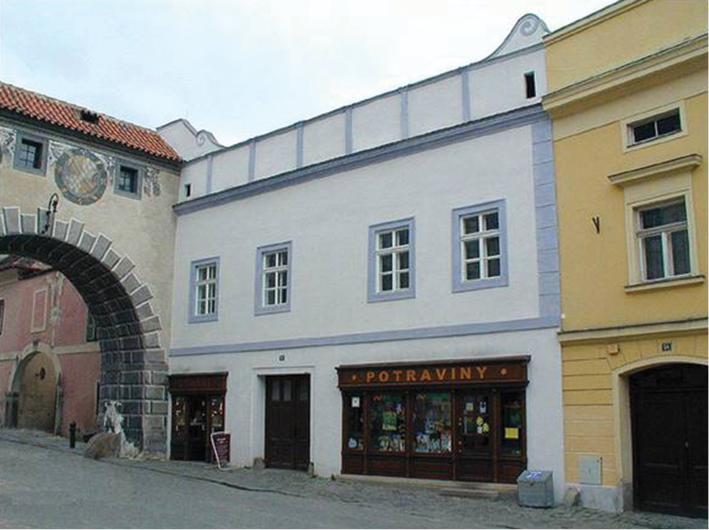
1Urban Šlechta’s interest in good cuisine was also probably reflected in his visits to lively local pubs where he would meet other burghers (Stejskal 1997, 376–408). In 1574 he was seriously injured in a brawl in one of the taverns.
Jetřich Slatinský from Slatinka, the hetman of Český Krumlov, who at that time represented William of Rosenberg, immediately began to urge the town council and wrote it a letter warning that “nasty wretchedness is committed by taverns in the town that despite the ordered hours to midnight or even past it, craftsmen and other humble persons perpetrate villainous acts by drinking and guzzling and numerous other wicked acts. All this is firstly against the Lord, secondly against good order and good manners, through this gaiety, murders, battles, assaults and various brushes occur. Most recently this incident happened to the cook of his Majesty, master Urban Šlechta, and about all this the town is aware, how shamefully, not to say treacherously, beaten, stoned and robbed he was“ (after Gross 1900-1901, 546).
0 200 km
Figure 1. Český Krumlov on the map of the Czech Republic (drawing by M. Preusz).
Figure 2. The front view of the house no. 55 in Latrán (photo by M. Preusz).
Figure 3. The ground plan of house no. 55 with the outlined yard and well (drawing by M. Preusz).
Figure 4. The well (photo by F. Krejča).
Figure 5. Cross-section through the well with the image of stratigraphic layers (drawing by F. Krejča).
Figure 6. Chamber tile depicting Bacchus or other figure (photo by K. Paclíková).
Figure 7. Washbasin (3D scan by J. Plzák).
Figure 8. Ceramic tableware – examples (photo by M. Preusz).
Figure 9. Glassware (examples) – Layer D: 1. goblet; 2. goblet; 3. piece of goblet; 4. piece of humpen – Layer E: 1. welcoming cup; 2. goblet of deep purple colour; 3. piece of bottle; 4. cup with optical ribs 5. cup with diamond-tipped engraving; 6. cup; 7. balustrated stem; 8. glass lamp; 9. window glass (drawing by M. Preusz).
Figure 10. Fragments of leather shoes (drawing by M. Preusz).
Figure 11. Wooden artefacts: 1. shovel; 2. balance beam; 3. peg; 4. washing mallets; 5. board tightened with wooden loops; 6. board tightened with iron (drawing by M. Preusz).
Figure 12. Brass spoon (drawing by M. Preusz, photo by K. Paclíková).
Figure 13. Coins: 1. Kreutzer Leopold I. Habsburg 1700; 2. Kreutzer Maria Theresa 1762 (photo by K. Paclíková).
Figure 14. Species spectrum of animals in the stratigraphic layers D (NISP=27) and E (NISP=227) (drawing by M. Preusz).
Figure 15. Butchering marks in pig and cattle bones (L. Kovačiková).
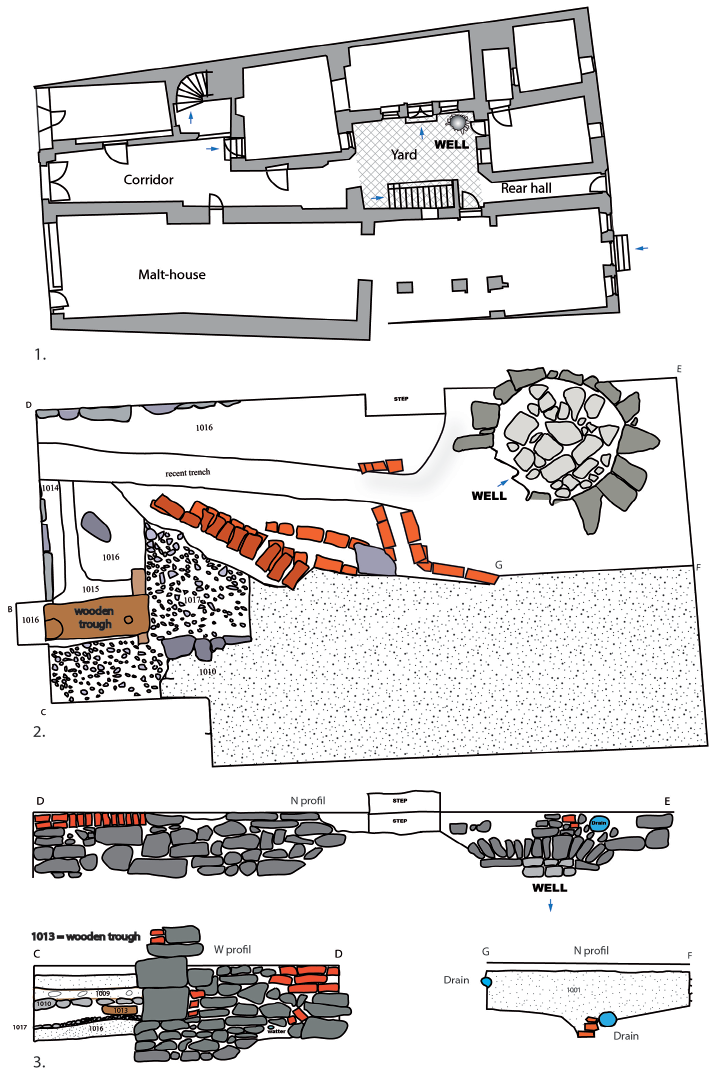
W section
N section
N section
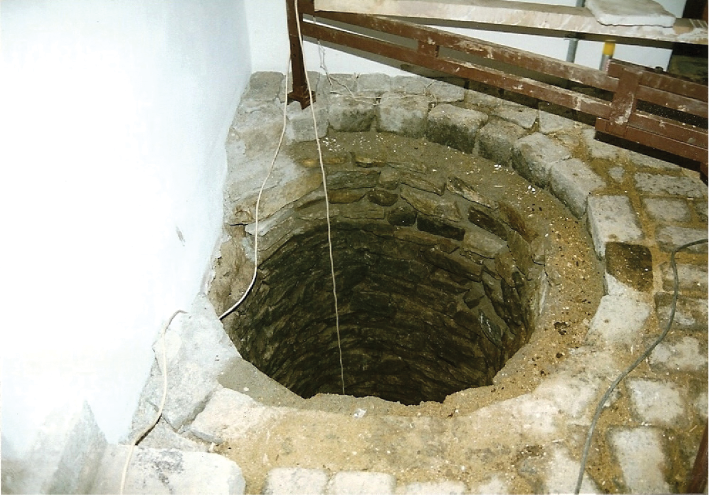
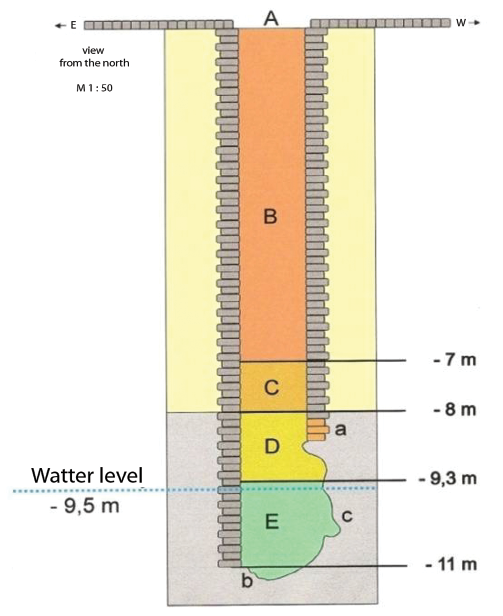
Table 1. Number of fragments and minimum number of vessels in the stratigraphic layers.
|
Stratigraphic layer |
Number of fragments |
Minimum number of vessels |
|
A |
0 |
0 pc |
|
B |
4 |
1 pc |
|
C |
0 |
0 pc |
|
D |
32 |
11 pcs |
|
E |
3554 (+ 1 whole vessel) |
340 (356 pcs) |
|
Total |
3591 |
352 (368 pcs) |
Table 2. Distribution of the individual types of ceramic vessels in the stratigraphic layers. Indicating the number of single fragments.
|
Shapes of vessels |
Layer B |
Layer C |
Layer D |
Layer E |
Total |
|
Pots |
0 |
0 |
7 (64%) |
184 (54%) |
191 |
|
Tripods |
0 |
0 |
0 |
48 (14%) |
48 |
|
Plates and bowls |
1 (100%) |
0 |
2 (18%) |
45 (13.3%) |
48 |
|
Jugs |
0 |
0 |
1 (9%) |
34 (10%) |
35 |
|
Lids |
0 |
0 |
0 |
10 (3%) |
10 |
|
Bowls with stirrup up handles |
0 |
0 |
0 |
8 (2.4%) |
8 |
|
Baking pans |
0 |
0 |
0 |
3 (0.9%) |
3 |
|
Chamber pots |
0 |
0 |
0 |
3 (0.9%) |
3 |
|
Saucers |
0 |
0 |
0 |
1 (0.3%) |
1 |
|
Basins |
0 |
0 |
0 |
1 (0.3%) |
1 |
|
Plate warmers |
0 |
0 |
0 |
2 (0.6%) |
2 |
|
Figurine |
0 |
0 |
1 (9%) |
0 |
1 |
|
Kettle |
0 |
0 |
0 |
1 (0.3%) |
1 |
|
Total |
1 |
0 |
11 |
340 |
352 |
Table 3. Finds of glass fragments in the stratigraphic layers. Indicating the number of single fragments.
|
Stratigraphic layer |
Hollow glass |
Sheet glass |
Total |
Types of hollow and sheet glass |
|
A |
0 |
0 |
0 |
0 |
|
B |
0 |
0 |
0 |
0 |
|
C |
0 |
0 |
0 |
0 |
|
D |
23 |
8 |
31 |
20 |
|
E |
58 |
2 |
60 |
13 |
|
Total |
81 |
10 |
91 |
33 |
Table 4. Slaughtering age of main domestic animals based on teeth in the mandible or maxilla. Number of teeth (Nd), Minimum Number of Individuals (MNI).
|
Nd |
MNI |
|
|
Cattle |
||
|
1 –4 months |
8 |
1 |
|
5 –6 months |
4 |
1 |
|
6 –9 months |
3 |
1 |
|
8–9 years |
4 |
1 |
|
Over 11 years |
2 |
1 |
|
Total |
21 |
5 |
|
Pig |
||
|
To 5 weeks |
2 |
1 |
|
5–7 weeks |
6 |
2 |
|
12–17 months |
4 |
1 |
|
18–22 months |
19 |
3 |
|
22–24 months |
11 |
1 |
|
Total |
42 |
8 |
|
Sheep/goat |
||
|
6–12 months |
4 |
1 |
|
1–2 years |
10 |
1 |
|
2–3 years |
4 |
1 |
|
over 4 years |
4 |
1 |
|
Total |
22 |
4 |
Table 5. Number of Identified Specimens (NISP) and Minimum Number of Individuals (MNI) split according to animal species in layers D and E. Summary quantification.
|
Animal/categoryage interval |
Layer D |
Layer D |
Layer E |
Layer E |
|
NISP |
MNI |
NISP |
MNI |
|
|
Cattle (Bos taurus) |
8 |
2 |
49 |
5 |
|
Pig (Sus domesticus) |
4 |
1 |
85 |
8 |
|
Sheep (Ovis aries) |
1 |
1 |
3 |
1 |
|
Goat (Capra hircus) |
– |
– |
2 |
1 |
|
Sheep/goat (Ovis/Capra) |
5 |
2 |
9 |
3 |
|
Dog (Canis familiaris) |
– |
– |
10 |
3 |
|
Cat (Felis catus) |
9 |
2 |
39 |
2 |
|
Domestic animals – total |
27 |
8 |
197 |
23 |
|
Red deer (Cervus elaphus) |
– |
– |
2 |
1 |
|
Hare (Lepus europaeus) |
– |
– |
1 |
1 |
|
Wild animals – total |
– |
– |
3 |
2 |
|
Goose (Anser domesticus) |
– |
– |
9 |
2 |
|
Domestic fowl (Gallus domesticus) |
– |
– |
17 |
3 |
|
Domestic poultry – total |
– |
– |
26 |
5 |
|
Carp (Cyprinus carpio) |
– |
– |
1 |
1 |
|
Fish – total |
– |
– |
1 |
1 |
|
Cattle/ Red deer (Bos taurus/Cervus elaphus) |
1 |
– |
2 |
– |
|
Domestic/wild pig (Sus sp.) |
2 |
– |
1 |
– |
|
Small ruminant |
– |
– |
1 |
– |
|
Large-sized mammal |
11 |
– |
19 |
– |
|
Medium-sized mammal |
– |
– |
8 |
– |
|
Other categories – total |
14 |
– |
31 |
– |
|
Unidentified mammal |
1 |
– |
8 |
– |
|
Unidentified bird |
– |
– |
1 |
– |
|
Unidentified fish |
– |
– |
1 |
– |
|
Unidentified – total |
1 |
– |
10 |
– |
Table 7. Results of diatom analysis.
|
Species |
Pcs |
|
Achnanthidium cf. affine |
4 |
|
Achnanthidium minutissimum |
18 |
|
Bacillariophyceae unident. |
21 |
|
Eunotia bilunaris |
35 |
|
Fragillaria virescens |
41 |
|
Gomphonema angustatum |
1 |
|
Hanaea arcus |
4 |
|
Navicula sp. |
945 |
|
Nitzchia amphibia |
8 |
|
Nitzchia commutata |
19 |
|
Nitzschia constricta |
24 |
|
Nitzchia dissipata |
6 |
|
Pinnularia cf. microstauron |
26 |
|
Pinnularia subcapitata |
38 |
|
Microspora sp. (green algae) |
54 |
|
Total Saprobic index |
0,61 |
Table 8. Comparison of informative values of archaeological and archive sources.
|
Archive reports relating to house |
Archeology of the well |
||||
|
1492 |
1541 |
1st half of the |
2nd half of the |
2nd half of the |
|
|
Construction of the house and interiors |
Wooden gallery |
Window disc |
|||
|
Household equipment, craft |
Two tubs |
Wooden shovel |
|||
|
Two tables |
Wooden mallets |
||||
|
Wooden peg |
|||||
|
Tiled stove |
Tiled stove |
Tiled stove |
|||
|
Glass lamp |
|||||
|
Kitchenware |
Big and medium bowl (metal?) |
Kitchen ceramics |
Kitchen ceramics |
||
|
Tableware |
Drinking glass |
Drinking glass |
|||
|
Table ceramics |
Table ceramics |
Table ceramics |
|||
|
Brass spoon |
|||||
|
Hygiene |
Chamber pot |
||||
|
Basin |
|||||
|
Clothing |
Skeins of linen |
||||
|
Black skirt |
|||||
|
Bedclothes |
|||||
|
Fur coat |
|||||
|
Finance |
Money |
Money |
Coins (1700) |
Coins (1762) |
|
|
Armour and weapons |
Armour |
||||
|
Crossbow |
|||||
|
Backyard |
Feeders |
Wooden trough |
|||
|
Well |
Wooden balance beam |
||||
|
Wooden buckets |
|||||
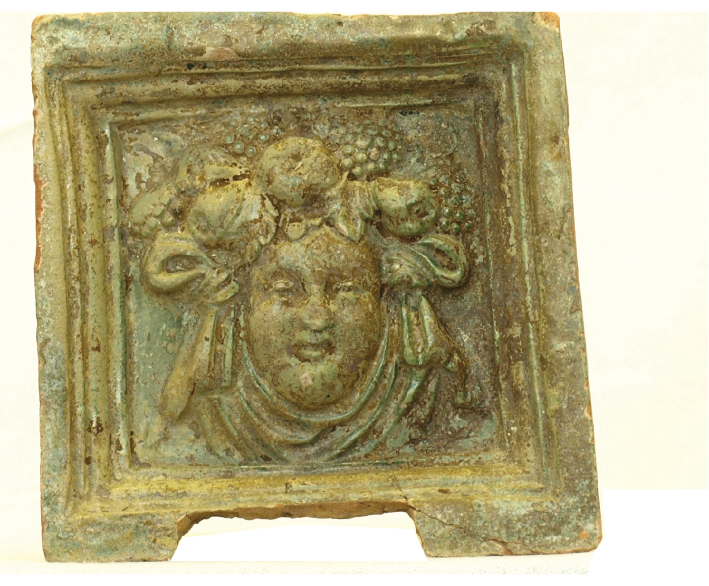
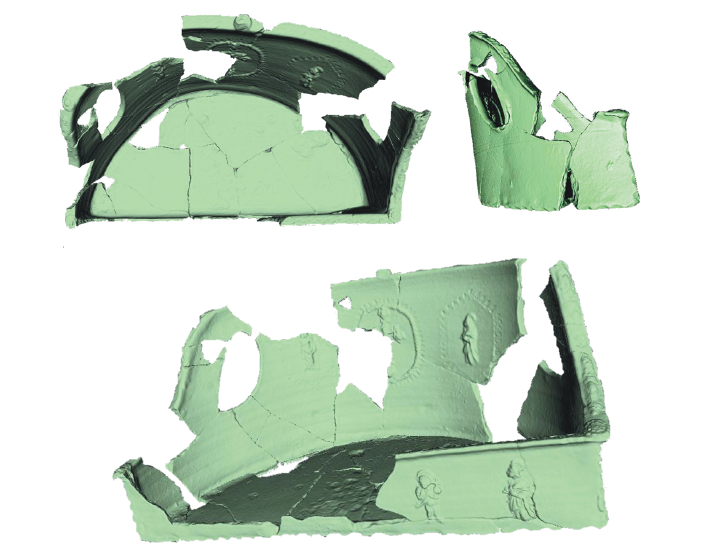
0 5 cm
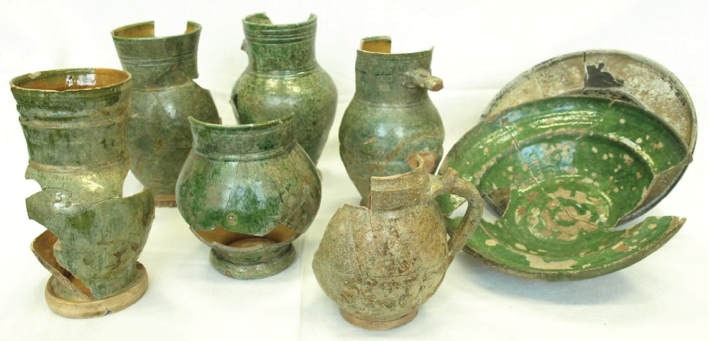
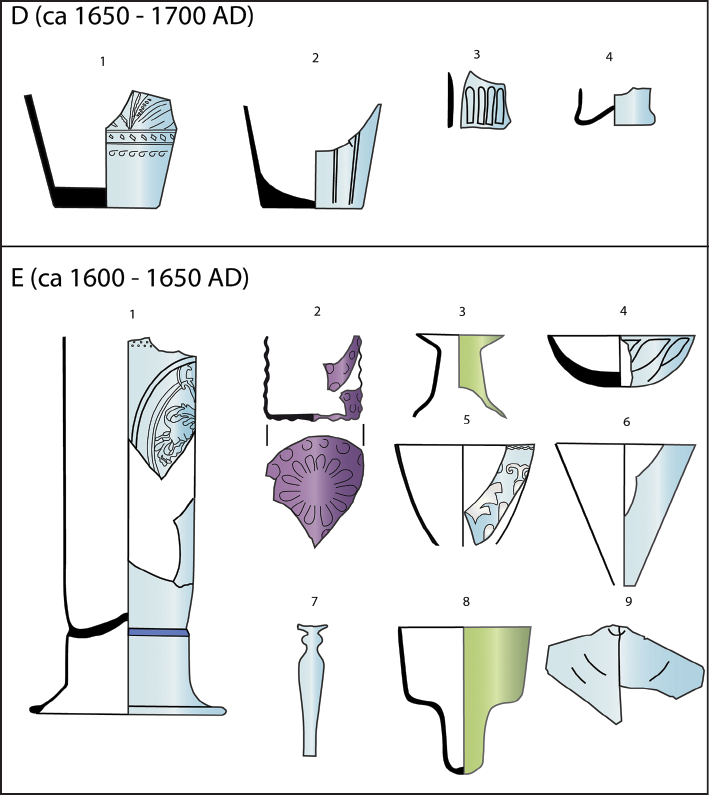
0 10 cm
0 10 cm
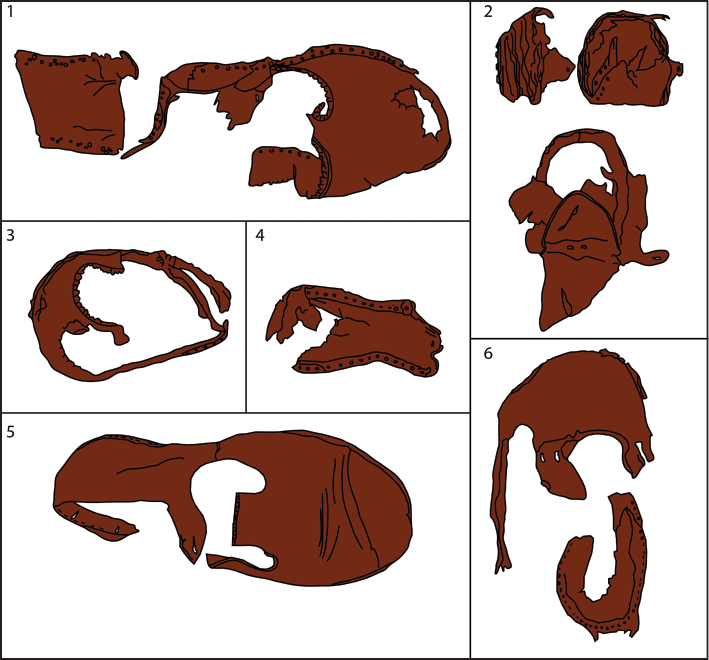
0 10 cm
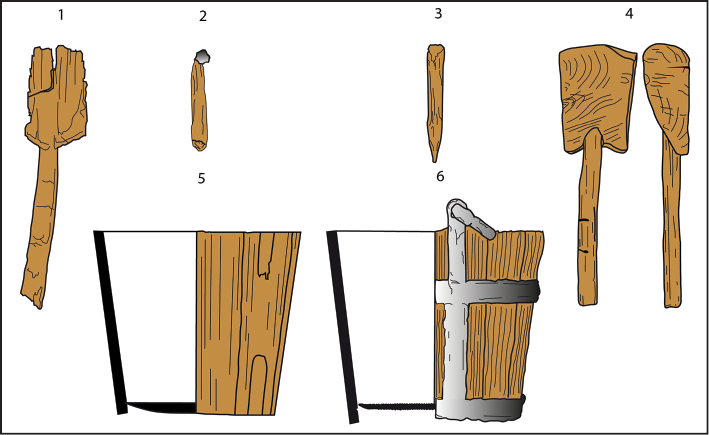
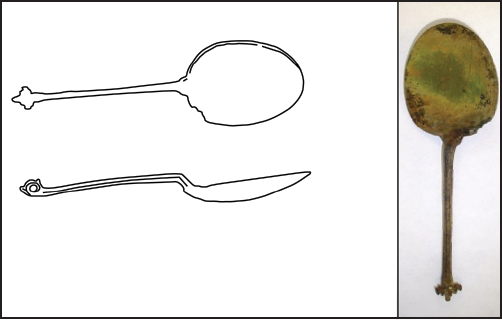
0 10 cm
0 40 cm
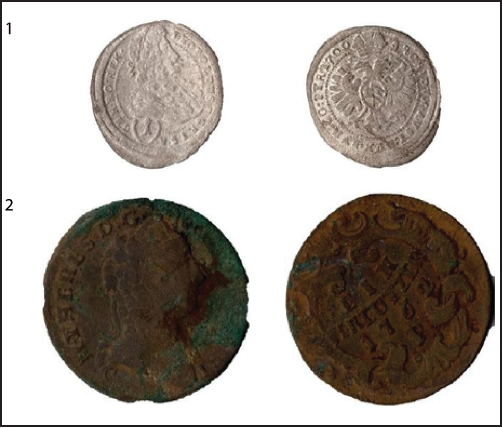
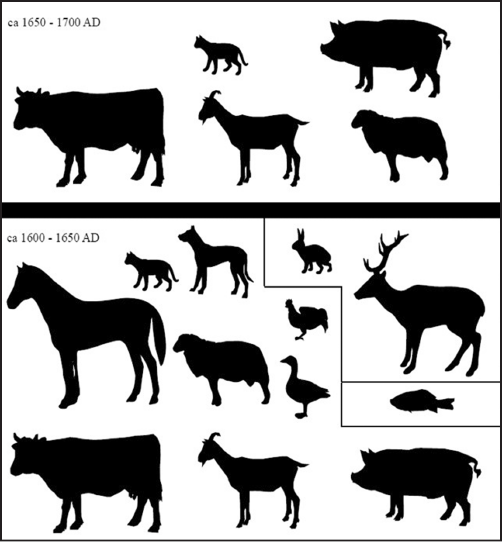
Table 6. Archeobotanical analysis of macroremains from layer E: sample 1 from depth –10 m (4 l) and sample 2 from bottom –11 m (5 l) (P. Kočár).
|
Sample |
1 |
2 |
|
Abies alba |
220 |
373 |
|
Aethusa cynapium s.l. |
1 |
|
|
Agrostemma githago |
90 |
756 |
|
Ajuga reptans |
1 |
5 |
|
Alchemilla sp. |
95 |
|
|
Amarantus sp. |
1 |
1 |
|
Amarantus retroflexus |
1 |
|
|
Anagallis arvensis |
3 |
88 |
|
Anethum graveolens |
1 |
|
|
Anthemis arvensis |
11 |
118 |
|
Anthriscus sp. |
1 |
|
|
Aphanes arvensis |
2 |
|
|
Arenaria serpylifolia |
1 |
|
|
Asperula cynanchica |
2 |
|
|
Asteraceae |
1 |
1 |
|
Atriplex sp. |
1 |
1 |
|
Avena sativa |
110 |
|
|
Betula sp. |
2 |
|
|
Brassica / Sinapis |
4 |
|
|
Brassica campestris |
1 |
|
|
Brassica oleracea |
1 |
|
|
Buglosoides arvensis / Echium vulgare |
1 |
6 |
|
Echium vulgare |
3 |
|
|
Bupleurum rotundifolium |
3 |
|
|
Calamintha acinos |
8 |
|
|
Calamintha clinopodium |
1 |
|
|
Cannabis sativa |
8 |
7 |
|
Carex leporina L. |
5 |
87 |
|
Carex verna (caryophyllea) |
66 |
|
|
Carex echinata (stellulata) |
24 |
14 |
|
Carex muricata (spicata) agg. |
1 |
4 |
|
Carex pilulifera / C. ericetorum |
1 |
30 |
|
Carex (velká trojhraná) |
29 |
352 |
|
Carex (malá trojhraná) |
23 |
141 |
|
Carex (trojstraná úzká) |
35 |
735 |
|
Carex ssp. (dvojstraná) |
58 |
1146 |
|
Carex / Eriophorum |
1 |
|
|
Centaurea cyanus |
9 |
85 |
|
Cerastium arvense |
9 |
|
|
Cerastium sp. (excl. C. arvense) |
1 |
34 |
|
Cerasus avium / C. vulgaris |
21 |
21 |
|
Cerasus vulgaris |
1 |
|
|
Cichorium intibus |
2 |
|
|
Cirsium arvense |
1 |
3 |
|
Coriandrum sativum |
1 |
|
|
Corylus avellana |
8 |
29 |
|
Cucurbita pepo |
10 |
|
|
Cuscuta europea / C. epilinum |
3 |
|
|
Daucus carota |
1 |
|
|
Dianthus deltoides |
2 |
|
|
Eleocharis sp. |
1 |
|
|
Euphorbia helioscopia |
1 |
1 |
|
Fagopyrum esculentum |
3 |
|
|
Fallopia convolvulus |
9 |
172 |
|
Ficus carica |
3 |
|
|
Fragaria vesca / F. viridis |
44 |
157 |
|
Galeopsis tetrahit / G. bifida / G. pubescens |
7 |
54 |
|
Galium aparine |
1 |
|
|
Galium spurium |
5 |
|
|
Galium ssp. |
1 |
2 |
|
Galium verum |
1 |
|
|
Hieracium murorum |
3 |
|
|
Hieracium sp. |
10 |
|
|
Hordeum vulgare s. l. |
1 |
|
|
Humulus lupulus |
32 |
297 |
|
Hypericum perforatum |
5 |
|
|
Hypochoeris radicata |
8 |
|
|
Chenopodium album agg. |
20 |
111 |
|
Chenopodium ficifolium |
1 |
5 |
|
Chenopodium hybridum |
2 |
|
|
Chenopodium polyspermum |
1 |
|
|
Isolepis setacea |
1 |
|
|
Juglans regia |
1 |
13 |
|
Juniperus communis |
9 |
8 |
|
Knaucia arvensis |
11 |
|
|
Lamiaceae |
6 |
4 |
|
Lapsana communis |
7 |
27 |
|
Leontodon sp. |
6 |
|
|
Leucanthemum vulgare agg. |
9 |
127 |
|
Linum catharticum |
2 |
83 |
|
Linum usitatissimum |
5 |
22 |
|
Luzula campestris / L. multiflora |
8 |
481 |
|
Lychnis flos cuculi |
3 |
124 |
|
Malus communis (domestica) |
4 |
1 |
|
Malva sp. L. (s.s.) |
1 |
|
|
Melandrium rubrum |
2 |
|
|
Melandrium album |
1 |
2 |
|
Melilotus albus / M. officinalis |
2 |
|
|
Mentha arvensis |
1 |
|
|
Myosotis sp. |
44 |
|
|
Neslia paniculata |
6 |
33 |
|
Panicum miliaceum |
1 |
3 |
|
Papaver rhoeas |
1 |
|
|
Papaver somniferum |
1 |
|
|
Pastinaca sativa |
2 |
|
|
Picea abies |
48 |
170 |
|
Plantago lanceolata |
2 |
10 |
|
Poaceae (Graminae) |
3 |
157 |
|
Polygonum aviculare agg. |
24 |
81 |
|
Polygonum hydropiper |
18 |
|
|
Polygonum lapatifolium agg. |
1 |
18 |
|
Polygonum persicaria |
84 |
|
|
Portulaca oleracea subsp. oleracea |
2 |
|
|
Potentilla erecta |
21 |
274 |
|
Potentilla ssp. |
1 |
11 |
|
Potentilla supina |
9 |
|
|
Prunella vulgaris |
6 |
64 |
|
Prunus domestica subsp. oeconomica var. pruneauliana |
2 |
1 |
|
Prunus spinosa |
1 |
|
|
Ranunculus acer |
15 |
278 |
|
Ranunculus auricomus |
5 |
|
|
Ranunculus flammula |
1 |
171 |
|
Ranunculus repens |
9 |
20 |
|
Ranunculus sp. excl. Flammula |
8 |
3 |
|
Raphanus raphanistrum |
10 |
101 |
|
Rhinantus sp. |
10 |
|
|
Rubus fruticosus agg. |
5 |
6 |
|
Rubus idaeus |
19 |
19 |
|
Rumex acetosa |
29 |
|
|
Rumex acetosella agg. |
31 |
837 |
|
Rumex crispus |
31 |
|
|
Rumex sece. Rumex |
3 |
6 |
|
Sambucus nigra |
1 |
2 |
|
Saponaria officinalis |
1 |
|
|
Scirpus silvaticus |
2 |
25 |
|
Scleranthus annuus |
6 |
11 |
|
Secale cereale |
1 |
|
|
Setaria glauca |
38 |
|
|
Silene cucubalus (vulgaris) |
2 |
|
|
Silene sp. |
3 |
|
|
Sinapis arvensis |
2 |
|
|
Sonchus asper |
2 |
|
|
Spergula arvensis subsp. avensis |
1 |
38 |
|
Stachys sp. |
1 |
|
|
Stellaria graminea |
189 |
|
|
Stellaria media |
5 |
32 |
|
Symfitum officinalis |
1 |
|
|
Taraxacum officinale agg. |
4 |
13 |
|
Teucryum botrys |
1 |
|
|
Thlaspi arvense |
14 |
55 |
|
Trifolium campestre / T. dubium |
2 |
17 |
|
Trifolium hybridum |
2 |
|
|
Trifolium montanum |
4 |
|
|
Trifolium pratense |
3 |
|
|
Trifolium repens |
3 |
11 |
|
Urtica dioica |
2 |
5 |
|
Urtica urens |
1 |
1 |
|
Vaccaria pyramidata |
1 |
|
|
Valeriana officinalis agg. |
11 |
|
|
Valerianella dentata |
20 |
62 |
|
Valerianella rimosa |
3 |
8 |
|
Verbena officinalis |
1 |
|
|
Vicia tetrasperma |
2 |
2 |
|
Vicia sp. |
5 |
2 |
|
Vicia ssp. |
1 |
1 |
|
Viola arvensis / V. tricolor |
18 |
|
|
Viola canina agg. |
3 |
|
|
Viola sp. |
1 |
|
|
Indeterminata |
15 |

Table 6. Archeobotanical analysis of macroremains from layer E: sample 1 from depth –10 m (4 l) and sample 2 from bottom –11 m (5 l). (P. Kočár). (Continued).